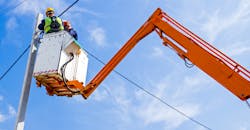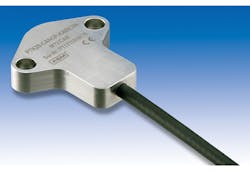Sensor Keeps Things on the Level
Keeping loads level can be especially challenging in mobile equipment operated on uneven terrain—especially when the load is a utility worker or other precious cargo. Linear transducers for hydraulic cylinders provide valuable feedback information for today’s sophisticated electrohydraulic controls, but when it comes to monitoring the attitude of a work platform, nothing beats the simplicity, reliability, and safety of direct measurement using an inclinometer (tilt sensor).
Mobile equipment adds to additional challenges because vibration can interfere with readings from the sensor, and uneven terrain can cause readings to continually fluctuate—which could overwhelm electronic controls.
To address these challenges, ASM Sensors Inc., Elmhurst, Ill., recently introduced its Positilit PTK29 inclination sensor that compensates for dynamic influences to give correct values even when in motion. The sensor measures ±180° inclination in one axis or ±60° in two axes. Using gyro-compensated MEMS technology, the sensor position signal is instantaneous with no delays and has a static linearity up to 0.05°.
The PTK29 can be mounted with selectable axis orientation. The sensor electronics are completely enclosed and protected by a hermetically sealed stainless steel housing. The compact, 10-mm flat and 49.5-mm (or less) wide sensor housing allows mounting in tight spaces. The sensor is also available in a hermetically sealed stainless steel housing with redundant output options for safety-critical applications.
The sensor is shielded against electromagnetic disturbances and available in protection class IP67. It can operate in areas of high shock and vibration in temperatures from −40° to 85°C.
For more information on the PTK29 inclination sensor, call (630) 832-3202, or click here.



